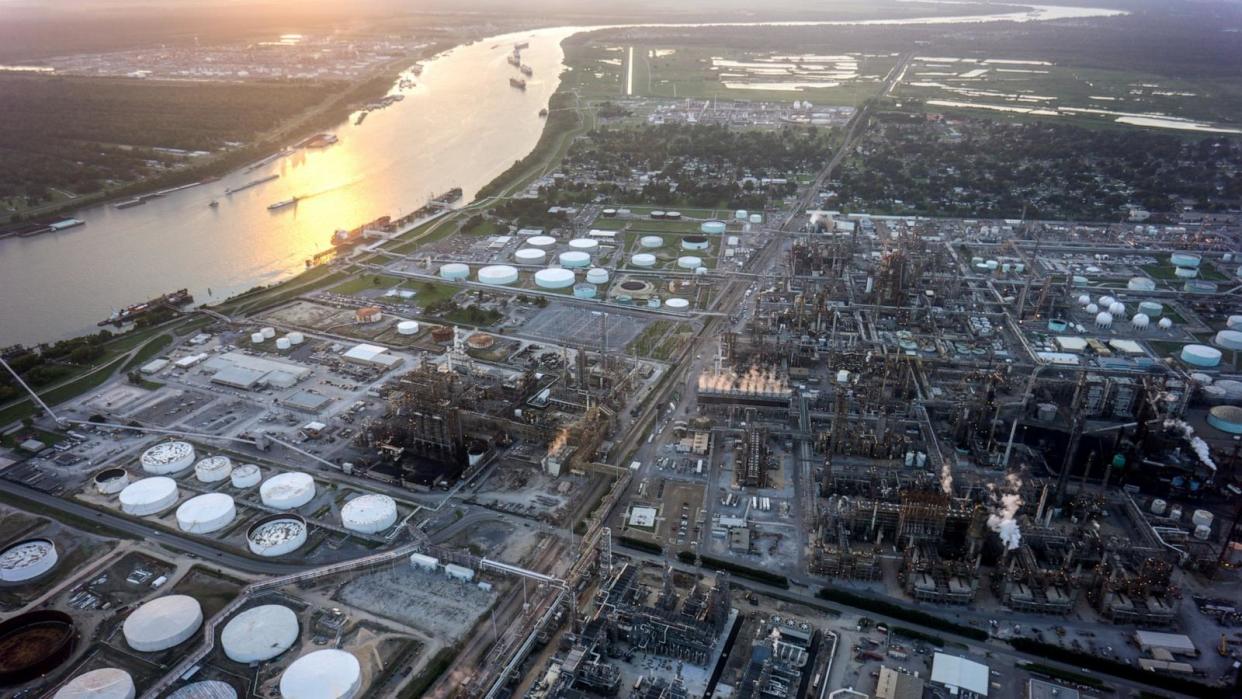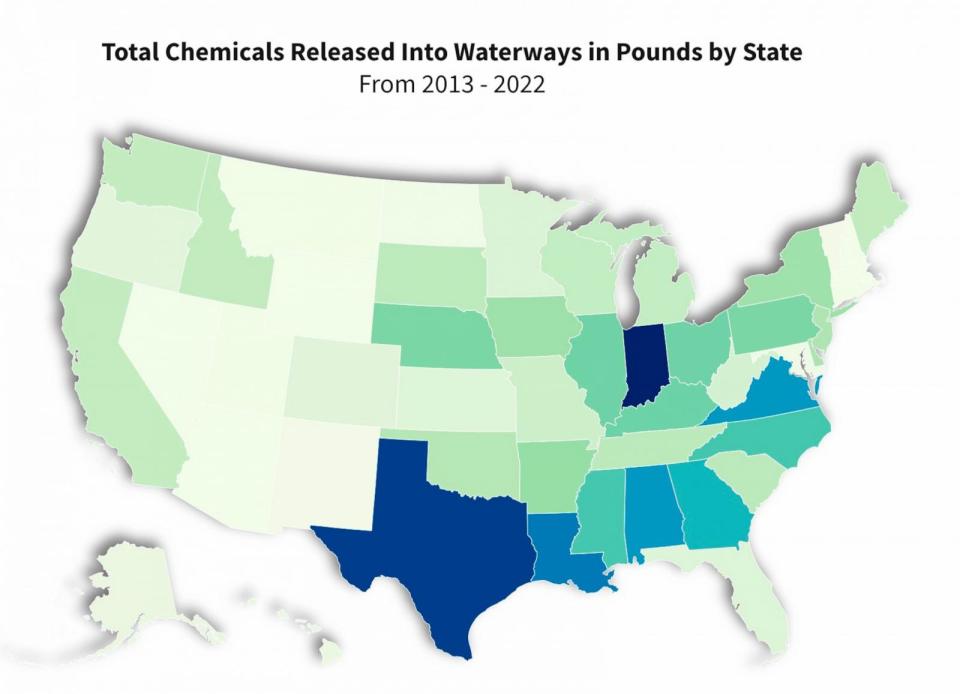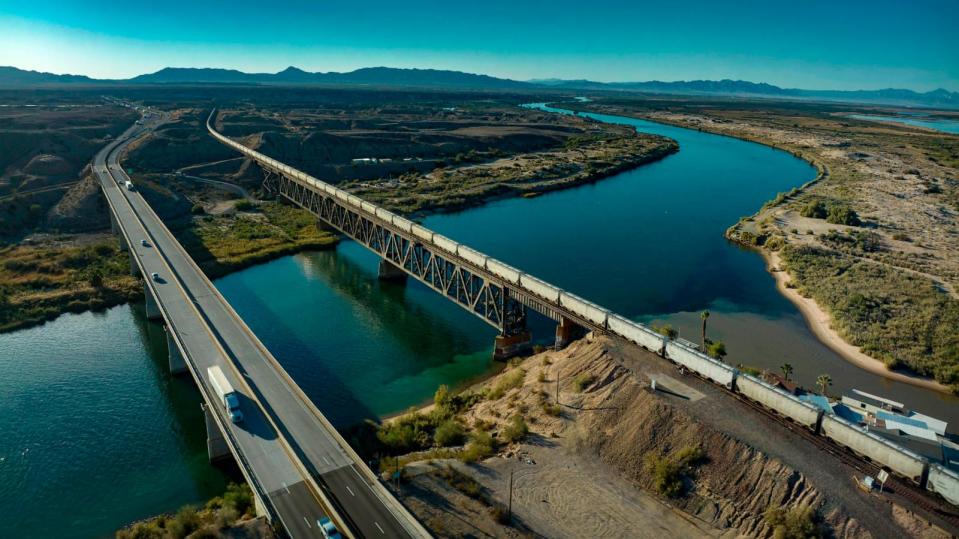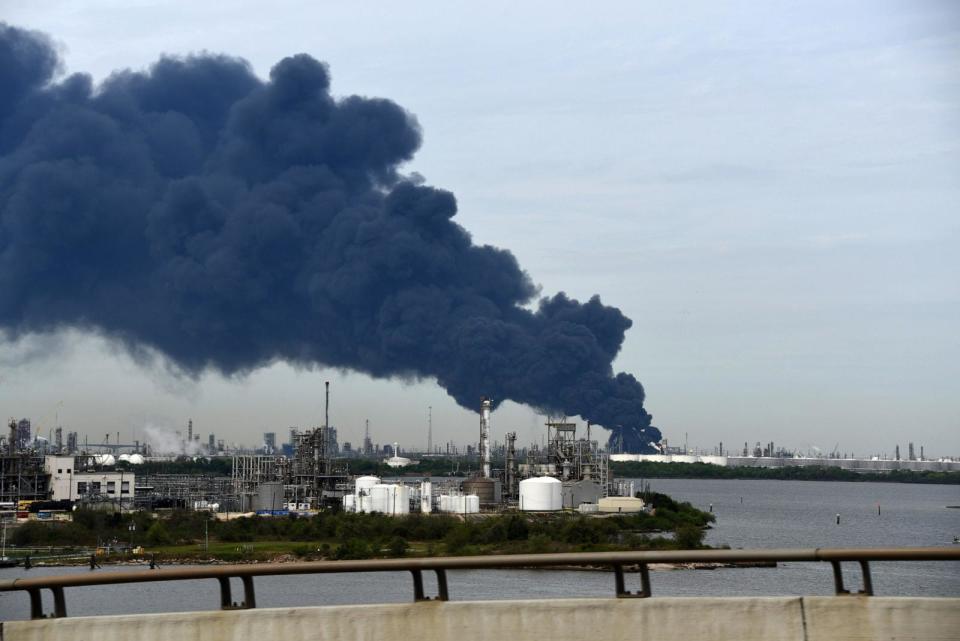Why some states are discharging much more chemical waste into local waterways, according to new report

Some U.S. states are discharging much more chemical waste from industrial activity into local waterways than others, according to a new analysis of data from the Environmental Protection Agency.
WaterFilterGuru.com, a blog by water treatment experts, examined data from the EPA's Toxics Release Inventory to rank the states that discharge the most chemicals into its watersheds from 2013 to 2022 for its report, "U.S. Waterways in Crisis."
The states that saw the most chemical discharges in the 10-year timeframe based on data reported in the TRI were Indiana, at 175.6 million pounds; Texas, at 160.1 million pounds and Louisiana, at 129.8 million pounds, according to the report.
MORE: New nonprofit to utilize AI to alleviate the global water crisis
The top chemicals that were discharged into waterways were found to be nitrate compounds, manganese compounds and ammonia, the data shows.

The industries found to contribute the most chemical release into waterways were food, at nearly 700 million pounds; primary metals, at 291.7 million pounds and petroleum products, at 288.1 million pounds, the report said. However, the EPA emphasized in a statement to ABC News that the dataset included in the TRI is not complete enough to make any inferences about the overall health of the water.
Much of the nitrate compounds coming from the food industries are likely coming from pesticides or fertilizers or as runoff from feed lots on farms, Stacy Woods, research director for food and the environment at the Union of Concerned Scientists, told ABC News.
"We know that the industrial food and farm system is a major contributor to water pollution," Woods said.
Previous research has identified counties in Indiana, Texas and Louisiana as "hotspots" for nitrogen fertilizer overuse, Woods added.
A lot of the discharges are associated with nitrate compounds, Danny Reible, a professor of environmental engineering at Texas Texas University, told ABC News

High concentrations of nitrates in drinking water have been shown to lead to certain cancers, according to research released in the last decade. Nitrates can also lead to eutrophication issues in bodies of water, including low oxygen levels, growth of algae and and waterways, Reible said.
"In the warm coastal areas all along the Gulf coast that's certainly of concern and an issue," Reible said.
MORE: Scientists find new way to desalinate seawater using solar power, study says
A report by the Union of Concerned Scientists released in 2020 illustrated how nitrogen pollution from agricultural Fields in the Midwest traveled through waterways through the Mississippi River delta and deposited into the Gulf of Mexico, contributing to a "massive and persistent" dead zone that causes more than $2 billion in damages every year to Gulf fisheries and marine habitats, Woods said.
Farmers can also reduce nitrogen pollution from agriculture by using sustainable farming practices. like reducing tillage, increasing cover crops and changing crop rotations, Woods said.
"All of these practices support healthy soil, and healthy soil can capture chemicals and keep them from running off of fields and into our waterways," she said.

In Texas, about 90% of the water discharges are nitrates, Reible said, adding that the vast majority of the chemicals released were not carcinogenic.
However, the quantities of chemicals released into a waterbody are not an indicator of risks to human health because these quantities alone do not indicate the extent of exposure to these chemicals, according to the EPA.
The report offers a clearer view of the states and cities that surround the largest industrial discharges, the authors said.
"We undertook this project because we wanted to learn more about the chemicals that are polluting our water in the United States," Brian Campbell, president and CEO of WaterFilterGuru.com, told ABC News.
The disparity in pollution based on region underscores the importance of localized environmental management strategies, Campbell added.
Farmers are increasingly relying on the advances in sustainable practices like no-till crops, buffer zones and herbicide tolerant crops, all of which reduce the amount of water and fertilizer needed to grow food or reduce the chance for run-off, Courtney Briggs, senior director of government affairs for the American Farm Bureau Federation, told ABC News.
"Farmers share the goal of protecting the natural resources they’ve veen entrusted with, including the waterways that help grow crops for America’s families," Briggs said.
There has been "incredible progress" from the ongoing efforts, Briggs said, pointing to a 2023 report by the EPA’s Hypoxia Task Force that found that 12 states met interim nitrogen reduction goals two years ahead of schedule.

The report adds to the overall group of research that shows "the United States absolutely needs to be paying attention to our waterways," Woods said.
But, there are some caveats to the report, experts told ABC News.
The EPA's Toxics Release Inventory is a bit of a "blunt instrument" of data because it looks at total mass of contaminants released into the environment in various modes in pounds, without regard to specific toxicity, Reible said.
Therefore, the report does not take into account important factors like concentration and total load, making it difficult to compare between locations with different flow levels, Keith Cherkauer, director of the Indiana Water Resources Research Center at Purdue University, told ABC News via email.
The EPA states that the data on the Toxics Release Inventory can be a "useful starting point" to evaluate whether chemical releases can pose potential threats but that the quantity of a chemical release alone is not necessarily an indicator of exposure to the chemical, or the potential health or environmental risks posed by the chemical.
More than 21,000 U.S. facilities report annually how much of each chemical is released into the environment and managed through recycling, energy recovery and treatment, for the TRI, an EPA spokesperson said in a statement to ABC News, adding that the TRI is just one dataset that may be used alongside other information to assess potential risk.
"While facilities reporting to TRI can be major sources of toxic chemical releases into the environment, they may not account for all releases of a chemical in an area, or all sources of pollution," according to the EPA. "TRI does not cover all chemicals, facilities or types of pollution."
The states that saw the least amount of chemical discharge were New Hampshire, at 5,216 pounds; Rhode Island, at 5,582 pounds and Arizona, at 11,747 pounds, the report found. However, these states likely see such low amounts of chemical discharge simply because they do not have access to large water systems, Cherkauer said. New Hampshire and Rhode Island are not located near large rivers, and the Colorado River is heavily managed and difficult to access from Arizona, Cherkauer said.
Conversely, the three states identified as having the largest sources of releases have access to large bodies of water for chemicals to be dumped in, Cherkauer said. Indiana, Texas and Louisiana are all surrounded by large bodies of water, like Lake Michigan, the Ohio River, the Mississippi River and the Gulf of Mexico, Cherkauer said.
The cities with the highest amounts of industrial discharge were Sioux Falls, South Dakota; Augusta, Georgia; and Corpus Christi, Texas; and the cities with the lowest were named as Killeen, Texas; Stockton, California; Elgin, Illinois; Lewisville, Texas; and Salem, Oregon -- each with just 1 pound of chemicals discharged between 2013 and 2022, according to the report.
Cities may not be a useful reporting mechanism for water resources, as cities boundaries can span multiple watersheds, Cherkauer said.

A subsequent report aiming to take into account seasonality of when chemicals are discharged could be useful given that the vast majority of the chemicals are being released from the pesticides and fertilizers used in food industry, Campbell said
"In these places where we're farming crops...that's primarily going to be happening in the summer or fall," he said, adding that water consumers could be more conscientious of possible higher concentrations of discharge during the that time.
The majority of TRI-reported surface water releases are subject to permitting requirements under the Clean Water Act and other federal and state regulations, according to the EPA.
In Indiana, all permitted operators are issued permits in accordance with state and federal rules and regulations, including the CWA, a spokesperson for the Indiana Department of Environmental Management told ABC News in an emailed statement.
"The standards outlined in the CWA have been developed and modified at the federal level and are deemed protective of human health," the IDEM spokesperson said.
Overall, the quality of the rivers throughout Texas is healthy, Reible said.
"Surface water is actually quite good, and there's been continued efforts to improve it," he said. "There's a lot of very clear waters as we move up the creeks and streams in central and west Texas."
Why some states are discharging much more chemical waste into local waterways, according to new report originally appeared on abcnews.go.com

